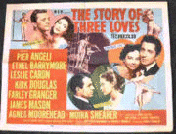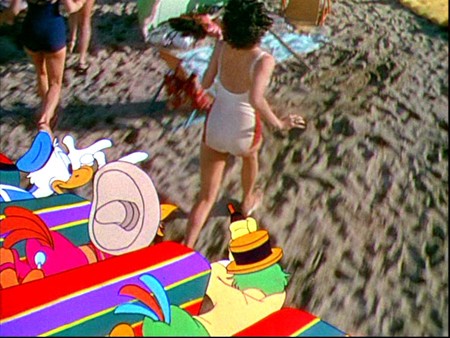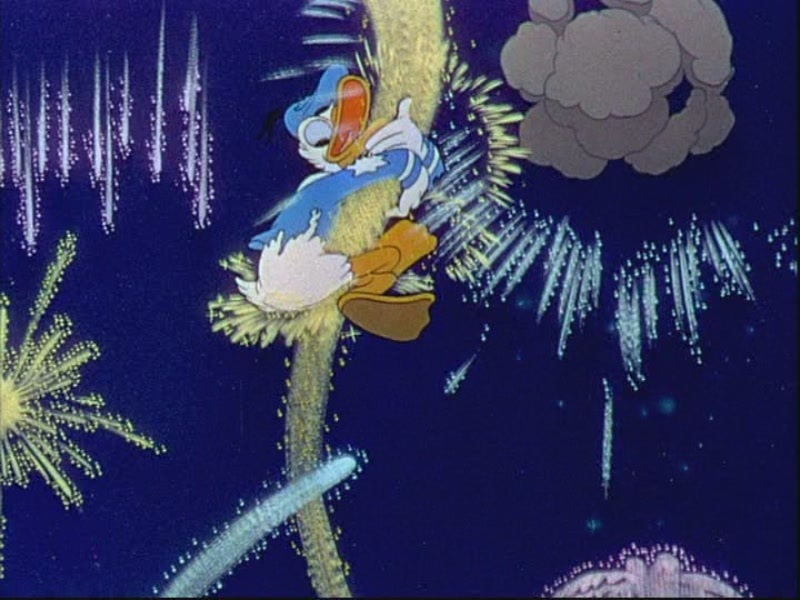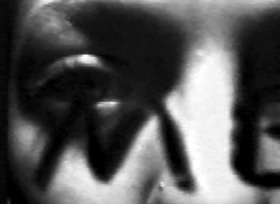From the Chicago Reader (September 14, 2007). — J.R.

Released in 1953, this glitzy, entertaining MGM art movie is fascinating partly because it testifies to the influence of patriarchal French existentialism on American pop culture. Gottfried Reinhardt (son of Berlin stage director Max Reinhardt) directed the first of its three episodes, about a ballet dancer with a heart condition (Moira Shearer) who’s driven to the breaking point by an enthusiastic choreographer (James Mason), and the third, a suspenseful tale about Parisian trapeze artists (Kirk Douglas and Pier Angeli) who learn to commit to one another in a post-Holocaust context by taking inordinate risks. But the best episode is Vincente Minnelli’s fantasy about a disgruntled boy in Rome (Ricky Nelson) who, with the help of an American witch (Ethel Barrymore), becomes a grown man (Farley Granger) long enough to date his French nanny (Leslie Caron). 122 min. (JR)
 Read more
Read more
Written for The Unquiet American: Transgressive Comedies from the U.S., a catalogue/ collection put together to accompany a film series at the Austrian Filmmuseum and the Viennale in Autumn 2009. — J.R.


After Orson Welles tried to implement Nelson Rockefeller’s
Good Neighbor policy with South America
in an unfinished episodic film, It’s All True (1942),
scandalizing both RKO and Latin American dignitaries
by focusing on poor and nonwhite characters,
Walt Disney dutifully offered a more conventionally
touristic and clearly segregated view of the
Continent, and succeeded spectacularly with the
same studio and many of the same dignitaries (as well
as with general audiences in both the U.S. and South
America) by offering this kitschy and visually extravagant
episodic, 70-minute film (1945), his first feature
to combine animation with live action. The title
pals are the infantile Donald Duck playing an American
tourist and the somewhat older Brazilian parrot
Joe Carioca and Mexican rooster Panchito, the latter
two playing Donald’s principal tour guides. The film
begins somewhat conventionally with tales about
Pablo, a South Pole penguin longing for warmer surroundings
who sails up the coast of Chile and Peru,
and a Uruguay boy gaucho who enters a flying donkey
in a race. Read more
This appeared in the November 15, 1991 issue of the Chicago Reader. — J.R.

VIDEOS BY SADIE BENNING

“I would like to call this new age of cinema the age of the caméra-stylo [camera-pen],” Alexandre Astruc wrote prophetically in 1948 in the journal Écran français. “This metaphor has a very precise sense. By it I mean that the cinema will gradually break free from the tyranny of what is visual, from the image for its own sake, from the immediate and concrete demands of the narrative, to become a means of writing just as flexible and as subtle as written language . . .
“It must be understood that up to now the cinema has been nothing more than a show. This is due to the basic fact that all films are projected in an auditorium. But with the development of 16-millimeter and television, the day is not far off when everyone will possess a projector, will go to the local bookstore and hire films written on any subject, of any form, from literary criticism and novels to mathematics, history, and general science. From that moment on, it will no longer be possible to speak of the cinema. Read more






